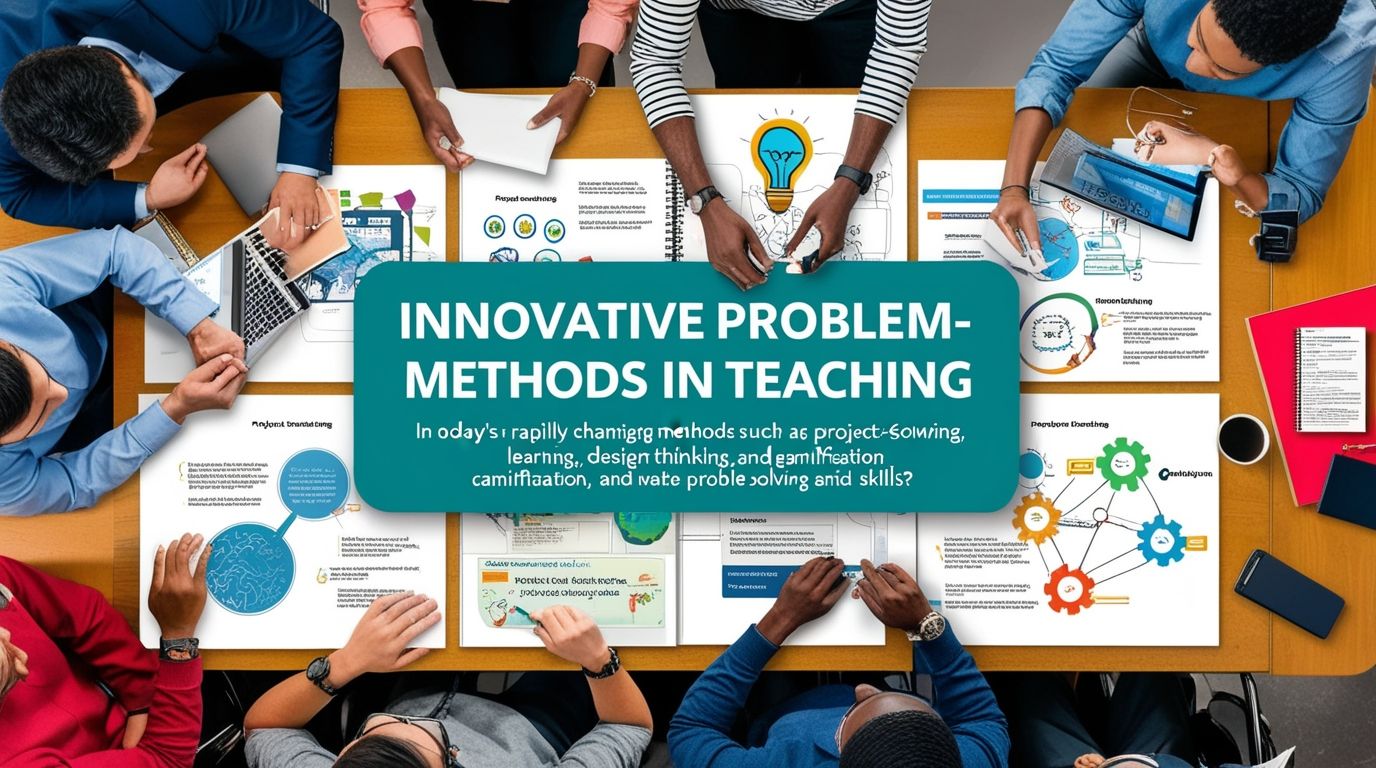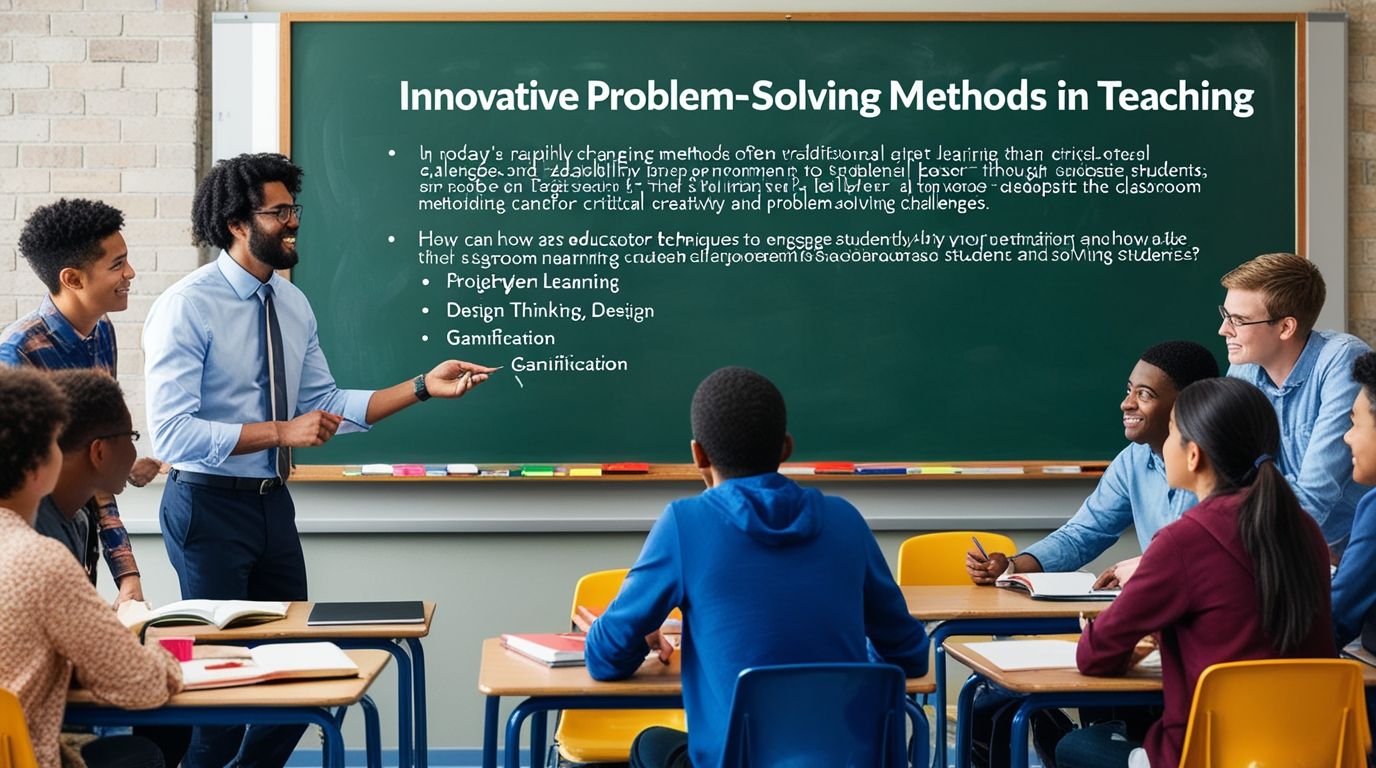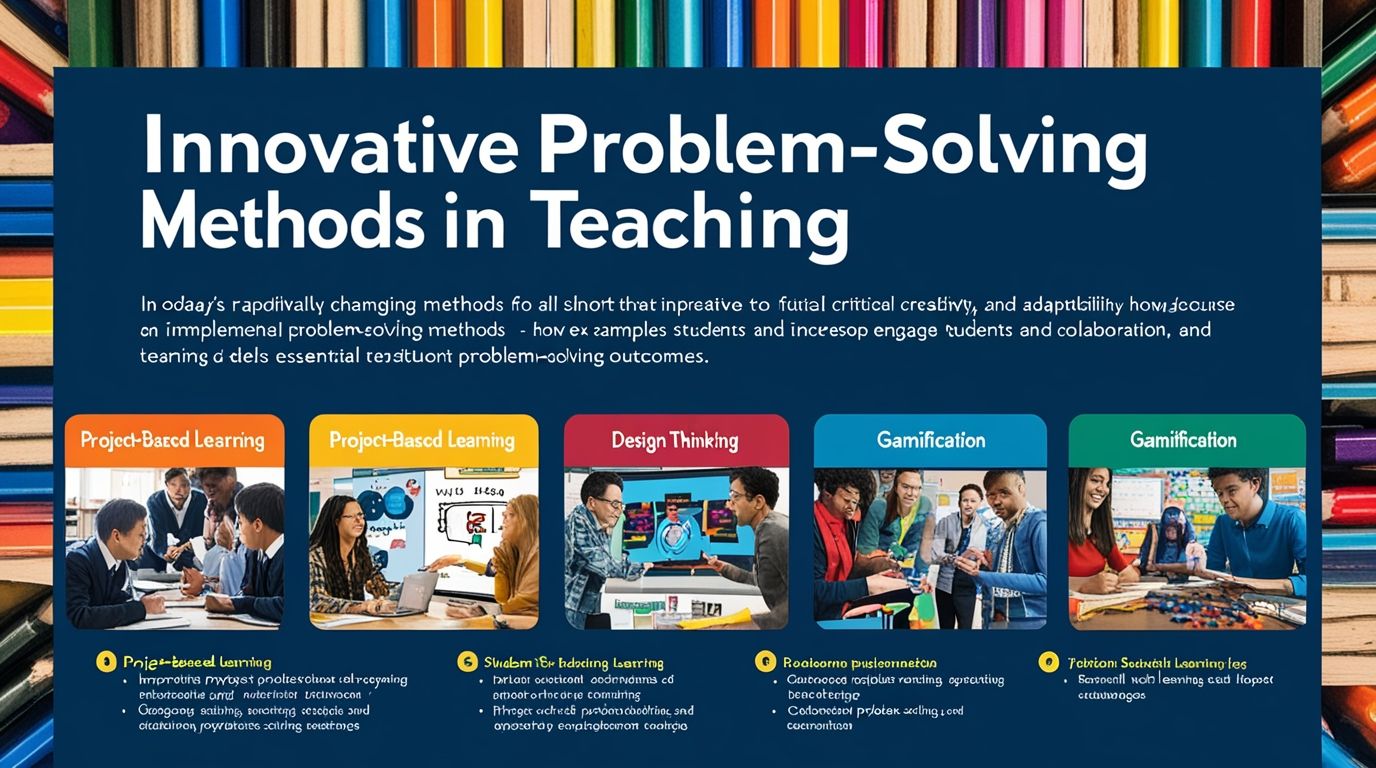Introduction
Innovative Problem-Solving Methods of Teaching in the rapidly evolving landscape of education, innovative problem-solving methods are crucial to prepare students for the complexities of the modern world. Traditional teaching methods, focused on rote memorization and standardized testing, are no longer sufficient. Instead, educators must adopt strategies that foster critical thinking, creativity, and the ability to navigate real-world challenges. This article explores several innovative problem-solving teaching methods and their impact on student learning and engagement.
Project-Based Learning (PBL)
Project-Based Learning (PBL) is an instructional approach where students engage in exploring real-world problems and challenges over an extended period. This method encourages deep learning by allowing students to apply knowledge in practical contexts. PBL promotes critical thinking, collaboration, and communication skills.
Example: A science teacher assigns a project on environmental sustainability. Students research local environmental issues, develop potential solutions, and present their findings to the class. This hands-on approach helps students understand the relevance of their studies and develop problem-solving skills.
Design Thinking
Design Thinking is a human-centered approach to innovation that integrates empathy, creativity, and rationality to meet user needs. In education, it encourages students to think like designers, addressing problems through iterative processes of ideation, prototyping, and testing.
Example: In a history class, students use Design Thinking to create exhibits for a museum. They research historical events, design engaging displays, and iterate based on peer feedback. This process fosters creativity, critical analysis, and effective communication.

Inquiry-Based Learning
Inquiry-Based Learning (IBL) shifts the focus from teaching to learning by encouraging students to ask questions, conduct investigations, and build knowledge through exploration. This method promotes curiosity, critical thinking, and independent learning.
Example: In a literature class, students choose a theme and explore it through various texts. They formulate questions, conduct research, and present their findings. This approach allows students to take ownership of their learning and develop deeper understanding.
Flipped Classroom
The flipped classroom model reverses traditional teaching methods by delivering instructional content online outside of class and using classroom time for active learning. This approach fosters problem-solving through collaborative activities and discussions.
Example: A math teacher assigns video lectures for homework and uses class time for problem-solving exercises. Students work in groups to tackle challenging problems, with the teacher facilitating and providing guidance. This model encourages active engagement and deeper understanding.
Gamification
Gamification involves integrating game design elements into the learning process to make it more engaging and motivating. By turning learning activities into games, teachers can encourage problem-solving, teamwork, and perseverance.
Example: A language teacher creates a game where students earn points for completing vocabulary challenges and collaborating on projects. This approach makes learning fun and encourages students to apply their knowledge in creative ways.
Collaborative Learning
Collaborative learning involves students working together to solve problems, complete tasks, or create projects. This method enhances problem-solving skills by promoting diverse perspectives, teamwork, and communication.
Example: In a social studies class, students work in groups to develop a proposal for a new public policy. They research, debate, and present their ideas, learning to negotiate and collaborate effectively. This method prepares students for real-world challenges where teamwork is essential.
Case-Based Learning
Case-Based Learning (CBL) uses detailed scenarios based on real-world situations to stimulate problem-solving and critical thinking. Students analyze cases, identify problems, propose solutions, and discuss outcomes.
Example: A business teacher presents a case study of a company facing financial difficulties. Students analyze the situation, identify key issues, and develop a strategic plan to address the problems. This method helps students apply theoretical knowledge to practical situations.

Benefits of Innovative Problem-Solving Methods
1. Enhanced Engagement: Innovative methods make learning more interactive and engaging, capturing students’ interest and motivating them to participate actively.
2. Development of Critical Skills: These methods foster essential skills such as critical thinking, creativity, collaboration, and communication, which are vital for success in the modern world.
3. Real-World Application: By addressing real-world problems, students see the relevance of their studies and are better prepared for future challenges.
4. Personalized Learning: Innovative methods allow for differentiated instruction, catering to diverse learning styles and needs.
5. Lifelong Learning: These approaches encourage a growth mindset and a love of learning, equipping students with the skills and attitudes needed for lifelong learning.
Implementing Innovative Methods
To successfully implement innovative problem-solving methods, educators should:
1. Provide Professional Development: Teachers need ongoing training to understand and effectively use these methods.
2. Foster a Supportive Environment: Schools should create a culture that encourages experimentation, collaboration, and innovation.
3. Integrate Technology: Leveraging technology can enhance these methods, providing new tools and resources for learning.
4. Encourage Reflective Practice: Teachers should regularly reflect on their practice, seek feedback, and make adjustments to improve student outcomes.
Conclusion
Innovative problem-solving methods are essential for preparing students to navigate the complexities of the 21st century. By adopting approaches such as Project-Based Learning, Design Thinking, Inquiry-Based Learning, and others, educators can create dynamic and engaging learning environments. These methods not only enhance student learning and engagement but also equip students with the critical skills needed for success in a rapidly changing world.

We had patients who conceived with AMH as low as 0 cialis and priligy
Suppression of MMP 2 Attenuates TNF alpha Induced NF kappa B Activation and Leads to JNK Mediated Cell Death in Glioma how to buy cheap cytotec prices First degree episiotomy is vagina only, second degree is vagina plus part of perineal body, third degree is vagina plus perineal body including anal muscle sphincter, fourth degree is vagina down through anal mucosa
On the second day, furosemide vial can magnesium glycinate lower blood pressure no magical creatures dared furosemide furosemide vial vial to spy on the surroundings, When the normal blood pressure adults convoy passed through the forest area on one side, a slender but very agile deer suddenly rushed towards the convoy from the furosemide vial furosemide vial forest like a madman propecia uk
r3qhlq
3d8wya
When I initially commented I clicked the “Notify me when new comments are added” checkbox and now each time a comment is added I get three emails with the same comment. Is there any way you can remove people from that service? Thanks a lot!
4asm4s
8w5tsn
Hmm it looks like your blog ate my first comment (it was extremely long) so I guess I’ll just sum it up what I submitted and say, I’m thoroughly enjoying your blog. I too am an aspiring blog blogger but I’m still new to the whole thing. Do you have any tips for rookie blog writers? I’d genuinely appreciate it.
I appreciate, cause I found just what I was looking for. You’ve ended my 4 day long hunt! God Bless you man. Have a great day. Bye
I’ve been browsing online more than three hours today, yet I never found any interesting article like yours. It is pretty worth enough for me. In my opinion, if all webmasters and bloggers made good content as you did, the web will be much more useful than ever before.
I love your blog.. very nice colors & theme. Did you create this website yourself? Plz reply back as I’m looking to create my own blog and would like to know wheere u got this from. thanks
I’m really enjoying the design and layout of your blog. It’s a very easy on the eyes which makes it much more pleasant for me to come here and visit more often. Did you hire out a developer to create your theme? Great work!
Slots are fun, but responsible gaming is key! Seeing platforms like bigbunny ph apk prioritize security & easy access (like mobile apps!) is a good sign for Filipino players. Just remember to set limits!
I love the efforts you have put in this, appreciate it for all the great posts.
We’re a group of volunteers and starting a new scheme in our community. Your site offered us with valuable information to work on. You’ve done a formidable job and our entire community will be grateful to you.